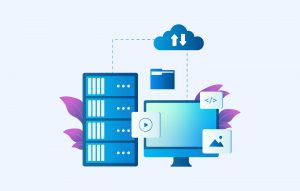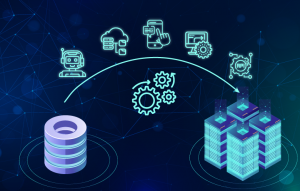Today, business processes are streamlined, thanks to cloud modernization. Organizations need cloud to modernize their operational processes as they have become more dependent on cloud infrastructure. In this blog post, we will discuss some of the ways businesses can modernize their processes to benefit from the cloud. Keep reading this blog post to discover more about cloud modernization, its role in a business infrastructure, the advantages of shifting to the cloud and the approaches you can follow.
Globally, spending on cloud computing is expected to grow from an estimated $371.4 billion in 2020 to $832.1 billion by 2025. MarketsandMarkets
Before we begin, let’s understand some common mistakes that lead enterprises to failure:
Multiple point products – Combining several point solutions raises costs and complexity.
Adopting an API-only strategy – While APIs are useful to connect apps, they are not scalable, long-term, enterprise-class solutions.
Manual approaches like hand coding – Taking manual approaches are pricey, difficult to operationalize, lack reusability and are not future-proof.
Using restrictive PaaS tools – PaaS or limited tools do not function for multi-cloud and
fail to deliver reliable data.
There is an urgent need to understand why cloud modernization is essential and how it helps to address these common mistakes often practiced by several enterprises. Modernizing existing legacy system is necessary for businesses to adapt to market changes and accelerate growth in the competitive market. It is time for enterprises to plan large-scale digital transformation programs to rethink business models, seize new market sectors and generate exponential value.
What role does the cloud play?
Cloud modernization is a holistic approach offering modern businesses an opportunity to generate business value. It simply means upgrading applications, retreading them to work cloud natively. Serverless, containers and replatforming are the common approaches to moving to cloud.
With different cloud options available today and no established criteria to measure their impact on business, it is initially challenging to conclude as to which one is the best for your specific business needs.
The challenging part not only lies in identifying advanced cloud services with their offerings but also in differentiating them and building appropriate cloud solution that best suits the business requirements.
Large businesses often discover that the underlying complexity of their operations frequently occurs due to data overload in their outdated systems. Another barrier to realizing their digital goals is the lack of experts to deal with such challenges. Therefore, the prime role of cloud modernization comes into the picture when moving business applications to the cloud. Besides, it rekindles the interest of an enterprise in evaluating its digital strategy.
Cloud modernization benefits to drive your business processes
Scalability and agility: As infrastructure requirements change frequently, firms must scale up to keep up. For instance, you will require more bandwidth, computing power and storage during peak hours. You must scale dynamically to avoid endangering your business operations for this reason. Cloud modernization provides you with the scalability and agility you need to remain competitive.
Simplified processes: You can simplify the complexity of maintaining the ideal IT infrastructure with cloud automation framework implementation. Your operations will run more smoothly if they are completely streamlined.
Faster deployment: One of the main benefits of automating business processes with the cloud is its orchestration, which enables organizations to quickly and effectively integrate, manage and deploy network devices, virtual computers and routers.
Lower infrastructure costs: When you switch to the cloud, you only pay for the resources used. Cloud computing eliminates the requirement for unused infrastructure because it is easy to remove resources. Therefore, physical IT deployments are not the same.
Streamlines IT operations: IT teams use cloud automation and orchestration to perform repetitive tasks rather than depending on manual labor, which streamlines IT operations. Automation is a multiplier that helps you simplify your IT operations by freeing up superfluous resources and ensuring the best possible use of them that are most important.
Resilience: The nightmare that is a network outage can be resilient. Since cloud automation testing provides continuous monitoring and cloud management, it can aid in this by boosting system resilience. Automation, for instance, is necessary in the event of a failing server. For things to keep running, it can transfer workloads to temporary standby servers in other places.
Approaches toward cloud pathways
One thing to remember is that there is not a single pathway to cloud modernization. Here are the major pathways that growing enterprises can consider:
- Containers – Mainly drive increased business agility and operational resilience
- Serverless – Drives cost savings and assists in increasing staff productivity
- Managed data – Improves business agility
- Managed analytics – Realize higher level of improvement across all processes
Move to the cloud!
The time has arrived for enterprises to transform their legacy monolithic IT systems to a modern cloud-based infrastructure to achieve future-proof business operations. Building enterprise-wide digital platforms can lower costs, speed up company innovation and improve customer experience. Moreover, enterprise application services are essential to fulfill the needs of the digital age.
You can re-imagine your business models and go through a risk-averse evaluation that aligns with your business and infrastructure plans by leveraging cloud modernization services of Softweb Solutions. Our cloud services comprise the pillars such as microservices, APIs, PaaS, and iPaaS. Our experts will introduce you to cloud frameworks and processes backed by rapid innovation.









